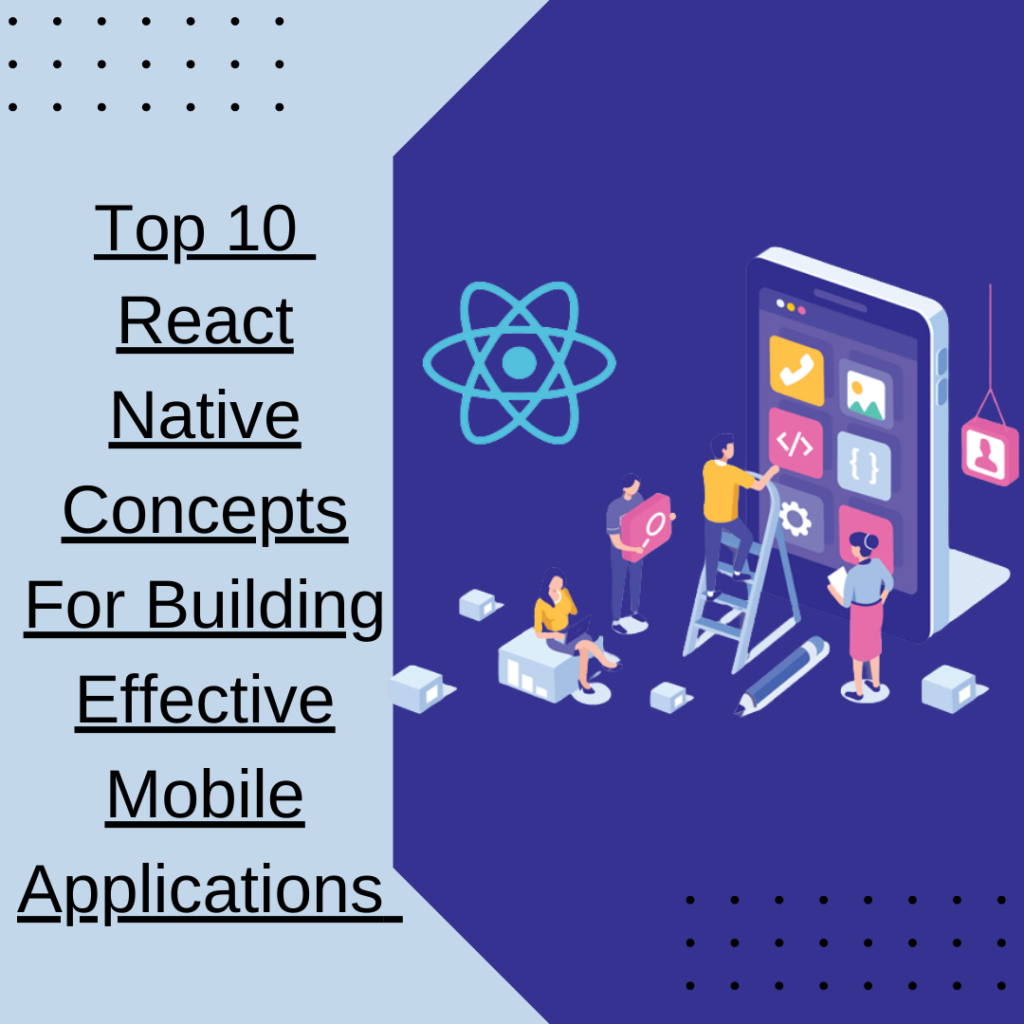Top 10 React Native Concepts for Building Effective Mobile Applications
React Native is a popular framework for building cross-platform mobile applications using JavaScript and the React framework. There are a number of concepts that are important to understand in order to use React Native effectively. Here are the top 10 React Native concepts:
- Components: Components are the building blocks of React Native applications. They are self-contained pieces of code that define a specific part of the UI, such as a button or a form.
- Props: Props are variables that are passed to components from their parent components. They can be used to customize the behavior and appearance of a component.
- State: State is a variable that is used to store and manage data within a component. It can be used to track the current state of a component and update the UI in response to changes.
- JSX: JSX is a syntax extension for JavaScript that is used in React Native applications. It allows developers to define UI elements using a syntax that is similar to HTML.
- Styles: Styles in React Native are used to define the appearance of UI elements. They can be used to set properties such as color, font size, and layout.
- Layout and Flexbox: React Native uses a system called Flexbox for layout and positioning. Flexbox allows developers to specify how UI elements should be arranged on the screen and how they should respond to different screen sizes and orientations.
- Navigation: React Native provides a number of components and libraries for implementing navigation in applications. These include navigators such as the stack navigator and tab navigator, as well as tools for deep linking and screen transitions.
- Async Storage: Async Storage is a module that is used to store and retrieve data in React Native applications. It allows developers to persist data such as user preferences and application state across app launches.
- Animations: React Native provides a number of ways to add animations to applications, including the Animated API and the LayoutAnimation API. These APIs allow developers to define complex animations and apply them to UI elements.
- Debugging: Debugging is an important part of the development process in any framework. React Native provides a number of tools and techniques for debugging applications, including the React Native Debugger and the Chrome Developer Tools.
Overall, these are some of the key concepts that are important to understand when working with React Native. By mastering these concepts, developers can build powerful and effective mobile applications using this popular framework.



